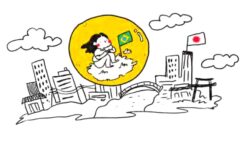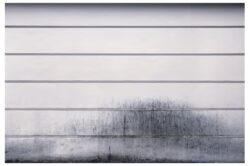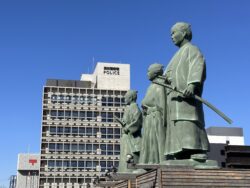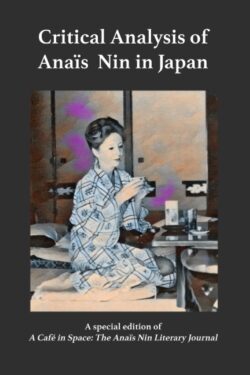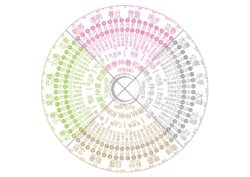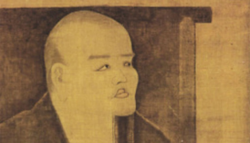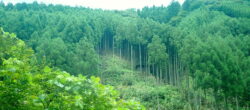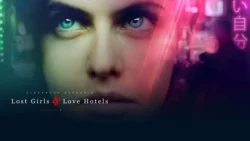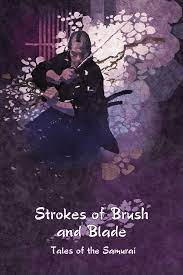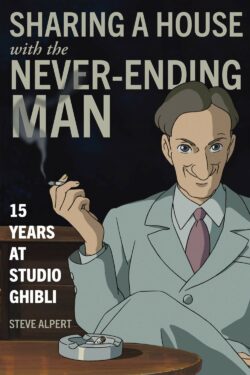Posts Tagged ‘japanese culture’
The Great Fire of Kyoto, 1788: A Forgotten History
It was mid-afternoon on the last day of the month when fire broke out just east of the Kamo river and south of the small Donguri Bridge (south of Shijō). By 6pm flames had spread as far as Teramachi, a thoroughfare containing many temples. By midnight it was at the Shimogamo Shrine. At 2am the Dairi (today called the Gosho, or imperial palace) was threatened; shortly thereafter the main walled section of the shogunal compound, Nijō Castle, was alight. Rain fell, but it was not enough, and by morning 201 temples, 37 shrines, 36,797 common dwellings and a total of 1,424 city blocks in 20 separate locations were gone.
Read MoreMICHIKO AND THE SHUMISEN STONE
612 CE: This year a man emigrated from Baekje whose face and body were all flecked with white, perhaps having been infected with white ringworm. Disliking his extraordinary appearance, the people wished to cast him away on an island in the sea. But this man said, “If you dislike my spotted skin, you should not breed horses or cattle in this country which are spotted with white. Moreover, I have a small talent. I can make the figures of hills and mountains. If you kept me and made use of me, it would be to the advantage of the country. Why should you waste me by casting me away on an island of the sea?”
Read MoreThe Japanese Diaspora in Japan
What does it mean to be Nikkei, a member of the Japanese diaspora? By being simultaneously Japanese and non-Japanese, Nikkei are forcing a re-evaluation of Japanese identity.
Japanese identity is complex and often oversimplified, its nuances underappreciated. Through interviews with Nikkei—particularly those who have returned to their ancestral homeland—I hope to shine a light on their experiences as outliers of Japanese identity, find common threads, and gain a deeper insight into the edges and unspoken essence of Japaneseness—what it means to be Japanese.
Read MoreWhite Lines
Horizontal lines on an earthen wall. Found on the outer walls of temples, some shrines, and the Imperial Palace, these lines indicate close historical ties to the Imperial family. Some temples have three or four lines, but the walls of monzeki jiin, where members of the Imperial family have served, are decorated with five.
Throughout the city of Kyoto, these lines are so ubiquitous as to go unnoticed by visitors and residents alike. For me, they have a mysterious beauty. Amidst all the classic scenes of Kyoto, I have found myself photographing these simple walls again and again. They are images which were literally painted by the weather.
Read MoreKagami: the Resonance of Ryuichi Sakamoto
Wearing a black suit and tortoiseshell glasses, he leans over a grand piano. Spotlit, his neatly cropped silver hair shines in the distance. Coming closer, I can see freckles on his pale face. He lifts his hands, lets them fall on the glossy keys, and begins ‘Before Long,’ the first of ten solo pieces he will play tonight. I can see the hammers of the Yamaha twitch.
How is this possible? The piano was not in the theater minutes earlier. And the musician—Ryuichi Sakamoto—passed away in March of 2023. Is he real? Is he present in this room? He can’t be, of course. But what does it mean to be present? To be real? The music, the sound waves, are alive. Is his spirit encoded in these frequencies and amplitudes?
Read MoreReminiscing Ryoma
Ryōma was born in 1836 to a family that held the lowest rank in the samurai hierarchy, a title purchased by an ancestor who had made his name as a sake brewer. Despite these humble beginnings, Ryōma went on to become a master swordsman, and in recognition of his skill, his Tosa clan allowed him to continue his training in Edo. It was during his time in the old capital that American Naval Commodore Matthew Perry sailed to Japan to forcibly end the shogunate’s policy of national isolationism.
Read MoreSearching for the Self
“In Japan,” the French-born American novelist and diarist Anaïs Nin writes in her Diary in the summer of 1966, “I had a weeping fit. The sweetness, kindness, consideration touched me. For once in my life I felt I was treated as I always treated people.”
Read MoreThe 72 Japanese micro-seasons
Ever since our ancestors gazed skywards or closely observed the wonders of the natural world around them, they saw patterns in cycles and found ways to recall them. Different cultures around the world have developed systems to mark the passage of time, and every calendar reveals something about how the people who created it related to the world around them. The ancient Japanese almanac of 72 micro-seasons provides a map of time that is a fascinating mixture of culture and nature.
Read MoreKyoto’s Suburban Rice-fields
As recently as the early 20th century, verdant and productive rice fields dominated the flat lands on the northern outskirts of Kyoto, squeezing small villages up against surrounding foothills. However, in post-war years this fertile farmland has been encroached on and overwhelmed by waves of suburbanization.
Read MoreMeeting the Challenges of One’s Times
Toshi (1901-1995) is perhaps most famous for her anti-war activism and The Hiroshima Panels, a series of artworks on the aftermath of the atomic bombing, both of which she carried out in conjunction with her husband Maruki Iri. Given this legacy, it is all the more salient that in a late interview she called herself “a war criminal.” Toshi explained that during WWII she took commissions for children’s picture books glorifying the war. Though she did so to prevent from starving, she felt that this did not absolve her of her guilt. The Art of Persistence is about this tension between moral imperative and survival, not only during this particular time but throughout the whole of Toshi’s life.
Read MoreDogen in a Hammock
Robert Aitken, the late Zen priest of Honolulu’s Diamond Sangha, once wrote that “Drowsy contentment may be a condition close to realization. It is a kind of emptiness, of nondifferentiation, where the ten directions melt: inside and outside become one.”
Read MoreJapanese Religion Through the Lens of Water
From KJ 101: As water is essential to all life, both its presence and its absence, its sufficiency, its excess, as well as its paucity, have fundamentally affected, profoundly influenced, and indeed guided the lives of Kyoto people in countless ways… In this article, I address Japanese religion through the lens of water within the context of Kyoto’s geography of surrounding mountains, waterfalls, and rivers, its long history, and its especially high concentration of shrines, temples, and tucked-away religious sites.
Read MoreFeeling the trees shivering: endangered environmental knowledge in northern Kyoto
For more than 400 years, villagers in the northern mountains of the Yamashiro basin (an area now incorporated to the modern administrative system of Kyoto city) have developed a special relationship with trees—in particular, with one specific type of tree, the cedar or Cryptomeria japonica, called sugi in Japanese.
Read MoreLost in Tokyo
William Olsson’s adaptation of Catherine Hanrahan’s semi-autobiographical novel Lost Girls & Love Hotels (September 2020) is a visceral inquiry into trauma, survival and the people who help us see the light at the end of the tunnel.
Although the main character, Margaret’s (Alexandra Daddario) background remains elusive, cinematographer Kenji Katori conveys the duality of her frame of mind through shifting surroundings, offering a riveting sensory experience.
An Addict’s Memories
The city Robert Whiting stepped into in 1962 bore little resemblance to the urban utopias of its ambitious future architects and town planners. The capital’s long-suffering residents stoically put up with contaminated rivers, suspect tap water, the extraction of night soil by suction trucks, and legions of rats. In the short interim between the end of the war and the author’s arrival, Tokyo’s hastily created, prefabricated structures were already in an advanced state of decomposition. Surveying the broken, odiferous city, ravenous crime groups, known as yakuza, closed in like hyenas…
Read MoreRequired Reading
Editor Barbara Summerhawk explains in her useful introduction to the “Gender / Queer / Here” issue of the Tokyo Poetry Journal that in selecting the poets whose work appears in this volume she was taking a big tent approach: “ . . . there are no divisions in this book between lesbian/gay/bi/trans/intersex/asexual/ally; some poets have chosen to identify themselves a certain way in their bios, others have not.”
Read MoreA Cut Above
The samurai is iconic to Japanese history. These two titles provide the reader with engaging depictions of an ancient warrior culture. Strokes of Brush and Blade: Tales of the Samurai is a collection of historical short fiction by modern Japanese authors. Forty-seven Samurai: A Tale of Vengeance and Death in Haiku and Letters was written in English by Hiroaki Sato, prolific Japanese author and translator.
Read MoreEXTRA!
KJ100: EXTRA! On this page we present additional views, impressions and visions of Kyoto, as an ongoing project complementing our print edition, KJ100: ‘100 Views of Kyoto – a Tribute.’ Kyoto View 18: Finding Home – Lauren W. DeutschWhen I passed a huge statue of Kannon, standing guard 24/7 by the door of one of…
Read MoreBehind the Scenes of Miyazaki’s Magic
Sharing a House with the Never-Ending Man: 15 Years at Studio Ghibli by Steve Alpert. Stone Bridge Press, 296 pp., $19.95. According to some, if you really love something you should never find out how it is made: the object of your admiration might lose its shine, its magic. If I felt that way I…
Read MoreKJ Spring 2020 Reads: Titles from Tuttle
Our reviews of the latest Japan travel and culture-oriented titles from the Asia specialist, Tuttle Publishing.
Read MorePruning the Branch: Pruning the Mind
Reading Cutting Back taught my untrained eye to more fully appreciate the complexities of Japanese formal gardens and the folks who are entrusted to maintain them.
Read More


